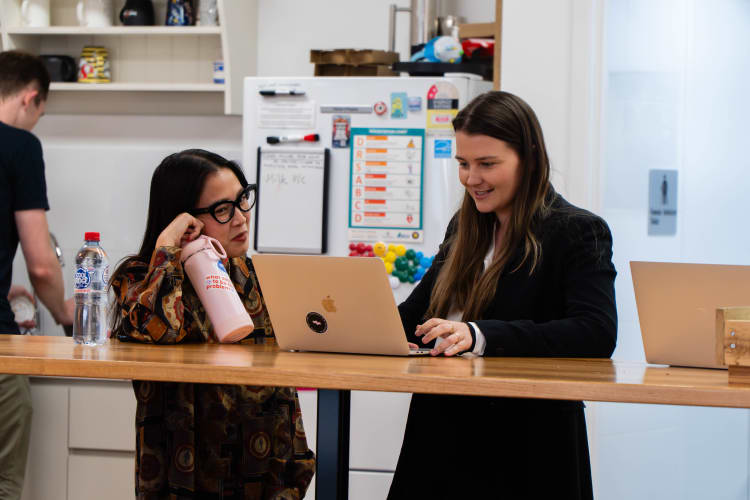
The Future Of Digital Transformation In Government
Digital transformation is continually reshaping how government agencies operate. This article explores the future of digital transformation in government agencies, focusing on the next term for the Queensland State Government as we head toward 2028, just four years short of the Brisbane (Meanjin) Olympics.
We’ll review the context canvas of the government in 2028, considering the myriad responsibilities and considerations public servants juggle when making decisions. Admittedly, we’ve all been guilty of grumbling about the pace of government before, but are coming to better appreciate the complexities of their choices.
Current Landscape of Digital Transformation in Government
Firstly, let's acknowledge the strides being made while keeping an eye on how they may our state’s future. In Queensland, key strategies include the implementation of digital ID systems, bolstered cybersecurity measures, and the development of inclusive digital services.
The Queensland State Government, through the Office of the Queensland Chief Digital Officer, is at the forefront of these efforts. Their approach is tailored to our unique demographic and regional needs, making it distinct from the federal initiatives. For more detailed insights, check out the Queensland Digital Strategy 2023-2026 Action Plan.
Context Canvas 2028
The business context canvas is a strategic framework that helps organisations visualise and understand their operational environment.
We’ve completed a detailed context canvas with a focus on the year 2028 in Queensland, considering the unique demographic and regional needs as well as the strategic initiatives of the Queensland State Government.

Demographic Trends 👪
Queensland's population is growing and diversifying. Gen Z and Millennials, making up to 60% of the voting population, demand digital services that are intuitive and mobile-friendly. Meanwhile, Gen X and Boomers value practicality and reliability in digital content. Additionally, services must address the needs of First Nations population, promoting reconciliation and equitable access to health and education.
Rules & Regulations 📓
Current regulations significantly impact digital transformation, with ongoing legislative changes poised to influence future strategies. The federal Digital Government Strategy emphasises secure, connected public services, aligning with Queensland's objectives to keep data onshore and secure.
Economic & Environmental Factors 🌎
Digital transformation offers economic benefits through cost savings and efficiency gains. Environmentally, digital solutions can reduce carbon footprints. However, economic disparities and inflation concerns present challenges, affecting public spending and economic stability.
Competition 🚫
Other states and countries are advancing in digital transformation, creating a competitive landscape. Queensland must analyse these competitors to identify successful strategies and potential pitfalls.
Technology Trends 💾
Emerging technologies such as AI, blockchain, and data analytics present opportunities to enhance public services. Queensland can leverage these technologies to improve service delivery, efficiency, and citizen engagement.
Customer Needs and Uncertainties 🤔
Citizen needs are evolving, requiring more inclusive and accessible services. Uncertainties such as data security, privacy concerns, and the digital divide among different demographic groups pose risks that must be managed proactively.
Future Outlook
Given this future and the present context, we’re likely to see a few things happen. Queensland will start reaping the benefits of its move to prioritise digital. Aligning other departments to embrace core and common platforms and standards whilst continuing to play with emerging technologies and delivering these with policy on a page, quick builds and agnostic vendor engagement, like Qchat which is great but still based off overseas technology. We can expect value from programs like the digital licence program to flow downstream to different agencies, with federated ID systems becoming more prevalent. This data will also flow across departments and upstream.
Opportunities and Risks
Acknowledging biased perspective as a vendor, here are the top opportunities and threats we foresee in digital transformation for government agencies.
Top Opportunities
Exploration of Simplified Policies and Emerging Technologies 📝
The ability to explore and implement new policies and technologies allows for core applications or forked use cases tailored to specific domains. This flexibility can drive innovation and adaptability within government services but still balances core and common.
Regional Empowerment 🧭
Enhancing regional output and innovation through digital transformation can lead to the development of exportable intellectual property and industries. This, in turn, supports infrastructure development and a more dispersed population, promoting balanced regional growth.
Improved Service Delivery and Citizen Engagement 🤳
Enhanced digital services will streamline interactions, making government services more user-friendly and accessible, thereby increasing citizen satisfaction.
Top Threats
Technical Debt of Legacy Systems 📉
Outdated systems and processes can inhibit data intelligence and prevent the creation of a unified customer view. All systems must integrate into a cohesive data framework, moving beyond the use of spreadsheets to ensure effective data utilisation.
Data Sovereignty and Big Tech 🏦
The reliance on major tech companies can lead to a loss of control over government data and capital. Maintaining data sovereignty is crucial to developing internal capabilities and ensuring data security.
Attractiveness of the Private Sector 🤵♀️
The private sector often appears more attractive to talent. The government must recognise that current developments will be maintained by the next generation and must foster an appealing work environment to attract and retain skilled professionals.
Conclusion
As Queensland navigates towards 2028, digital transformation stands as a cornerstone for enhancing public service efficiency, transparency, and engagement. The state’s proactive approach, guided by tailored strategies and an understanding of unique regional needs, positions it well for future challenges and opportunities. By embracing simplified policies, empowering regional innovation, and prioritising user-friendly services, Queensland can ensure robust economic growth and improved citizen satisfaction.
However, the journey is not without its threats. Addressing the technical debt of legacy systems, ensuring data sovereignty, and making government roles attractive to top talent are critical to building continuous modernisation.
Collaboration among stakeholders, continuous adaptation to emerging technologies, and a commitment to data security will be essential. With these efforts, Queensland will lead the way in digital innovation, providing a future-ready framework for government agencies and setting a benchmark for others to follow.






